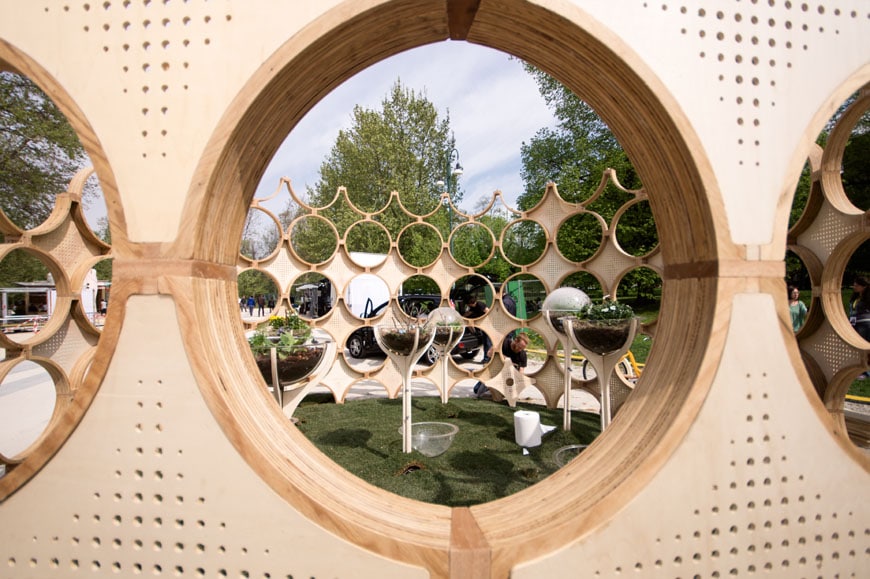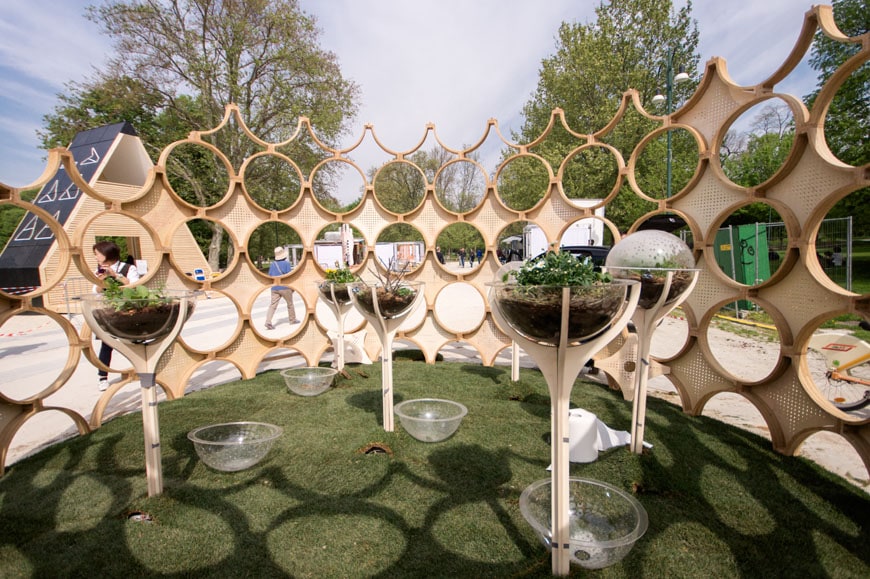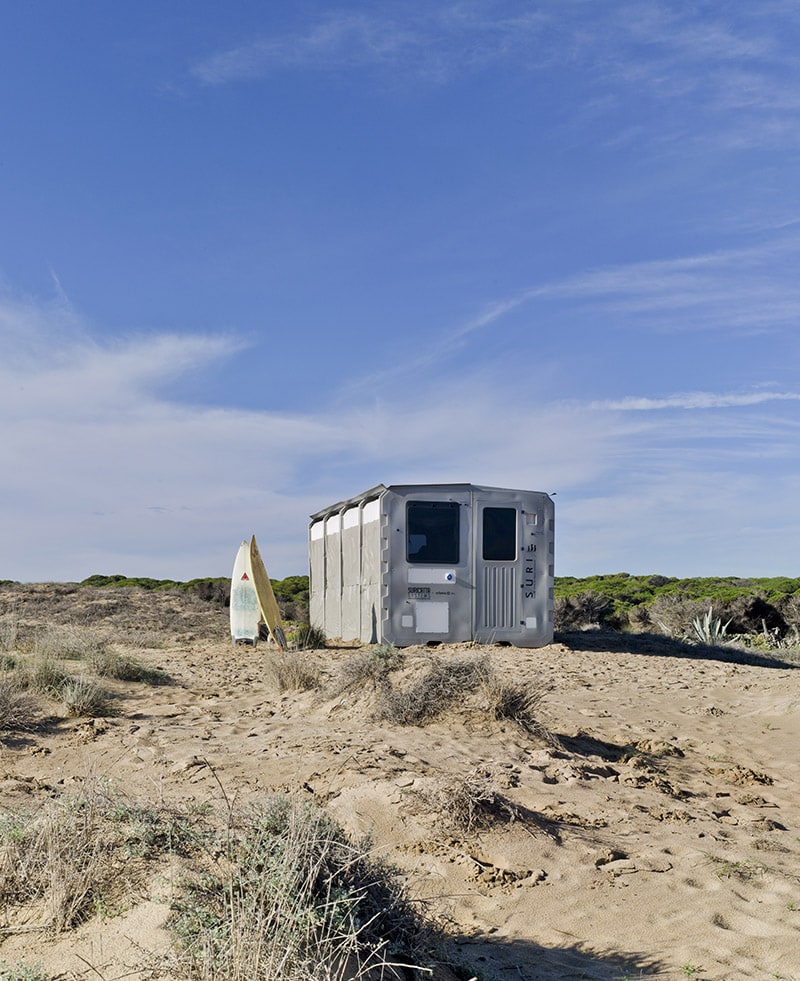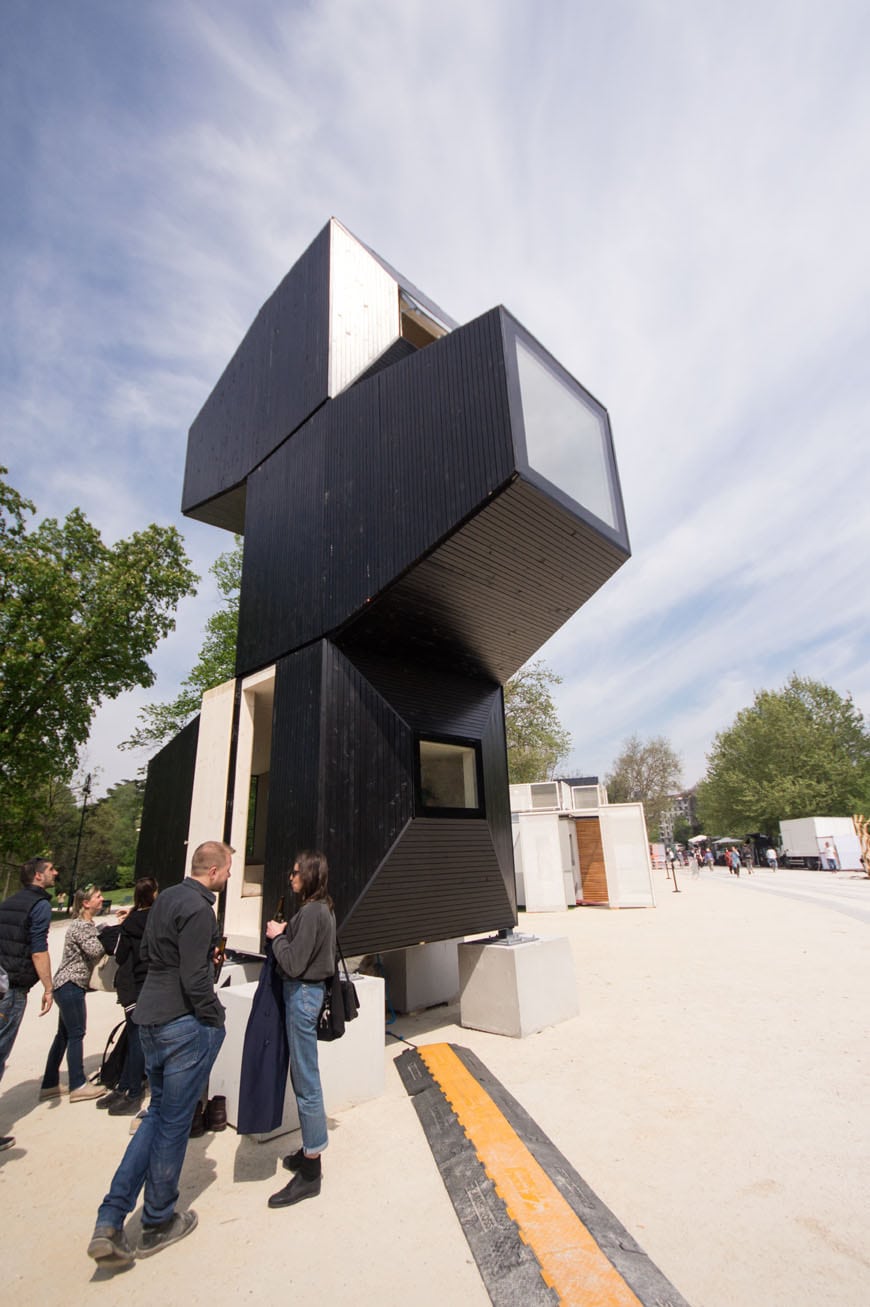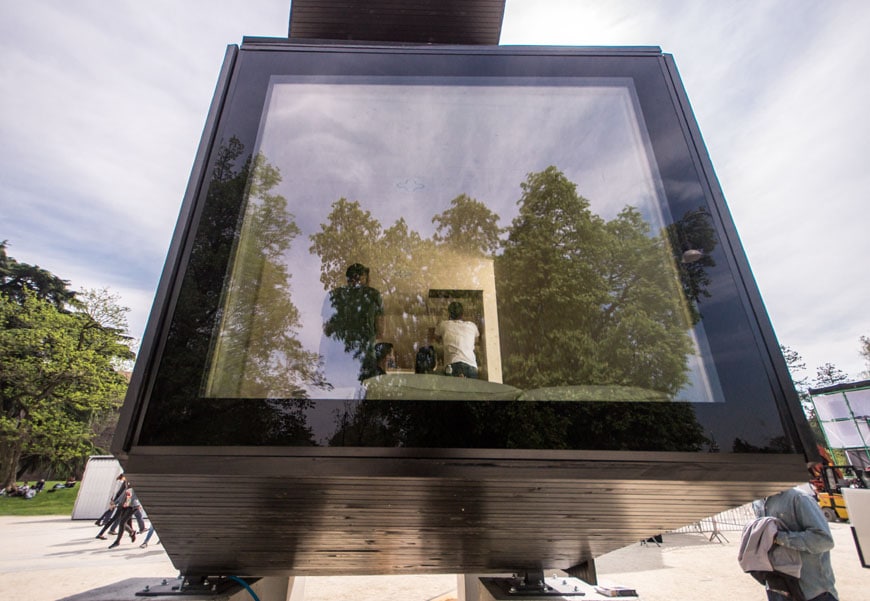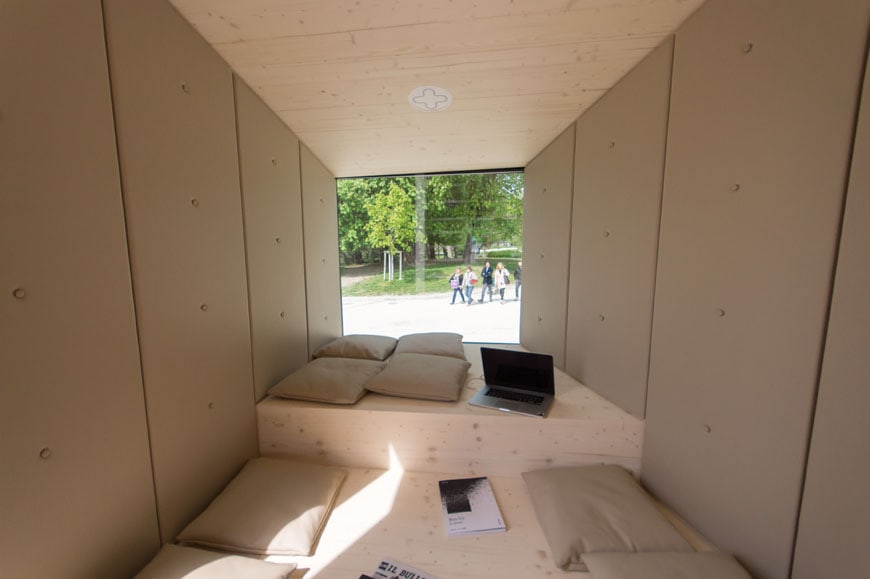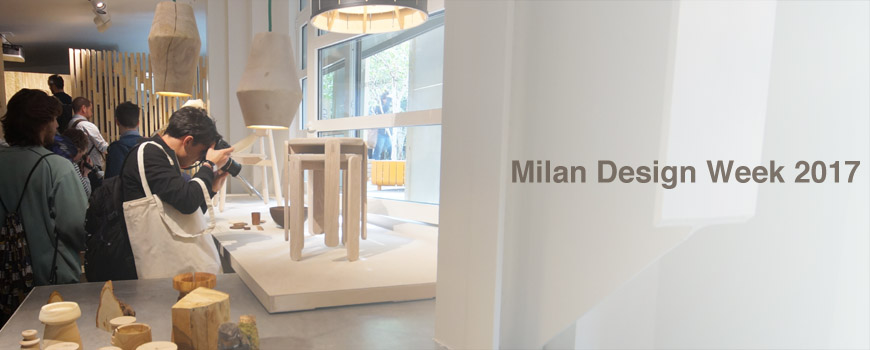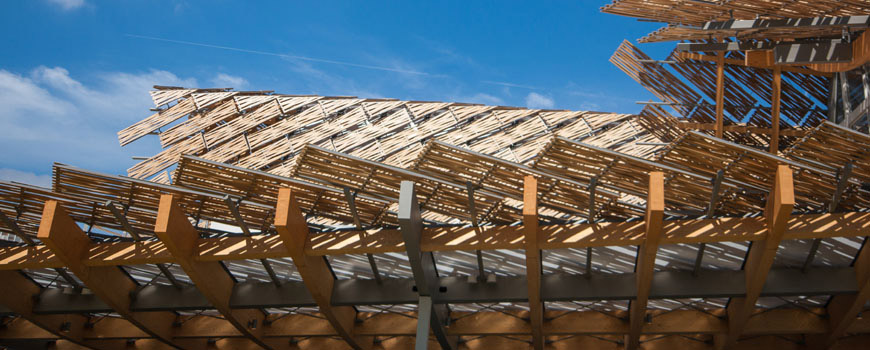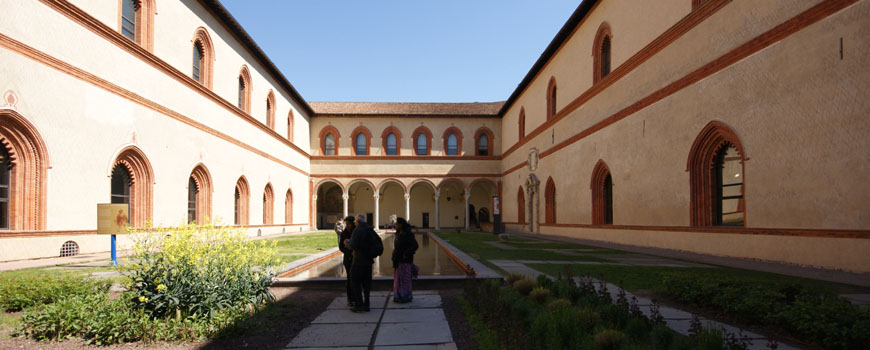Inhabits: sustainable micro-architectures | Milan Design Week 2017
Prototypes for sustainable minimal housing units and small pavilions, proposing new ways to live in the urban space, are on view at the first edition of Inhabits – Milan Design Village.
The event, which takes place from April 4 through 9 in Piazza del Cannone at the Parco Sempione in Milan, presents 5 housing units, called Living Units, designed by Italian and international teams.
The event is organized by Re.rurban Studio, founders of Zona Santambrogio Design District, together with Killer Kiccen, and with the support of the Municipality of Milan and ADI – Italian Design Association.
M.A.DI. – timber construction system
M.A.DI. is a construction system, conceived by architect Renato Vidal and produced by Area Legno.
Its key points are the simplified assembling process and a structure that doesn’t require foundations.
The system allows us to build a highly sustainable building in a few hours. The modular units are earthquake-resistant and can be used to create houses, emergency shelters, tourist accommodations, and public centers.
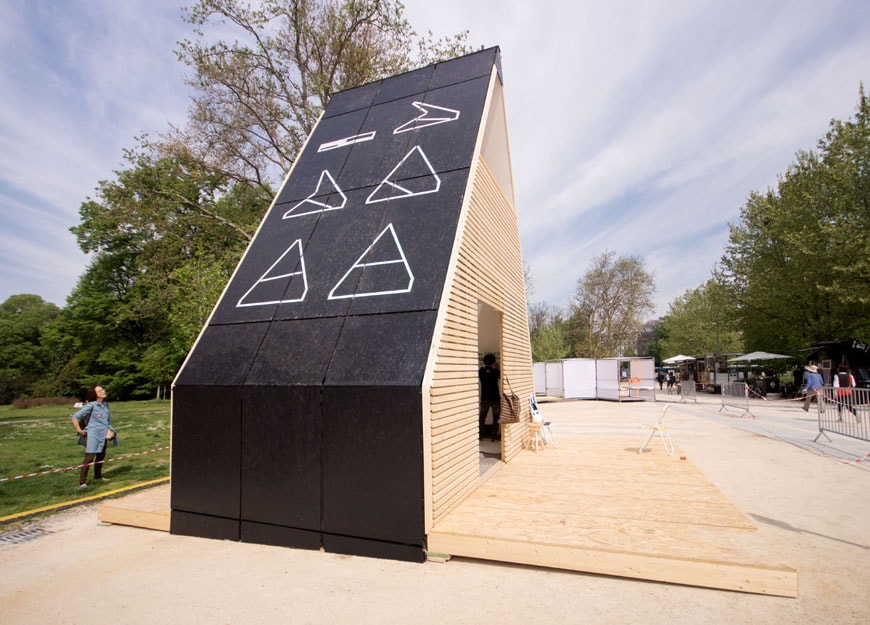
The M.A.DI. housing unit; photos © Inexhibit, 2017
Wunderbugs – interactive ecosystem pavilion
Conceived by OFL Architecture and curated by Francesco Lipari, Wunderbugs is an interactive pavilion.
Inside it, there are six interactive ecosystems equipped with an Arduino microcontroller, and an array of light, proximity, temperature, and movement sensors that measure, elaborate, and convert into music the main vital signs of plants and insects. The pavilion was installed for the first time at the Auditorium Parco della Musica in Rome during the second edition of Maker Faire Europe.
The Wunderbugs pavilion; photos © Inexhibit, 2017
Omnia Mobile-Tiny House – dwelling unit and emergency shelter
Designed by Studio Dedalo, Omnia Mobile-Tiny House can be used to fill unused spaces, such as flat roofs and residual urban lands.
Conceived to communicate and share information with other similar houses, the dwelling unit can be easily removed and transported elsewhere, making it suitable for installation in protected natural areas or to be used as an emergency shelter.
The Omnia Mobile-Tiny House dwelling unit and emergency shelter; photo © Inexhibit, 2017
SURI – emergency housing unit
SURI (shelter units for Rapid Installation) is an emergency housing unit to be installed in war zones and disaster areas.
Produced by Spanish manufacturer Suricatta System, the housing unit provides a decent dwelling, good living conditions and comfort, and natural lighting and ventilation. Thermal insulation is achieved through an array of containers, which are filled with sand and hung to the external walls. Thanks to solar panels and a rainwater recycling and purification system, SURI is energetically self-sufficient.
View of the SURI emergency shelter installed
Living Unit – modular house
Living Unit is the outcome of a research project – developed by OFIS, C+C, C28, and AKT II in collaboration with Permiz – aimed to create a self-supporting flexible housing unit suitable for installation in different contexts, climatic conditions, and terrains.
The basic unit, which can accommodate 2 people, includes a double bed, a closet, a table, and chairs with the possibility to install a bathroom and a small kitchen. If necessary, 2 or more units can be combined and grouped either vertically (as at Parco Sempione) or horizontally.
Interior and exterior views of the Living Unit modular house; photos © Inexhibit, 2017
copyright Inexhibit 2025 - ISSN: 2283-5474




